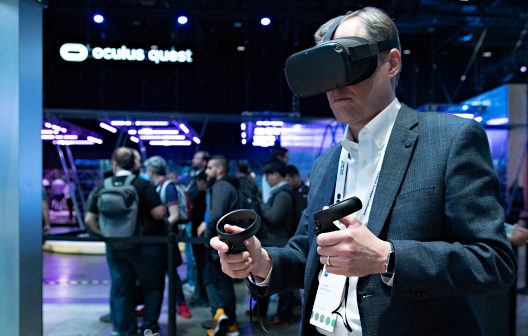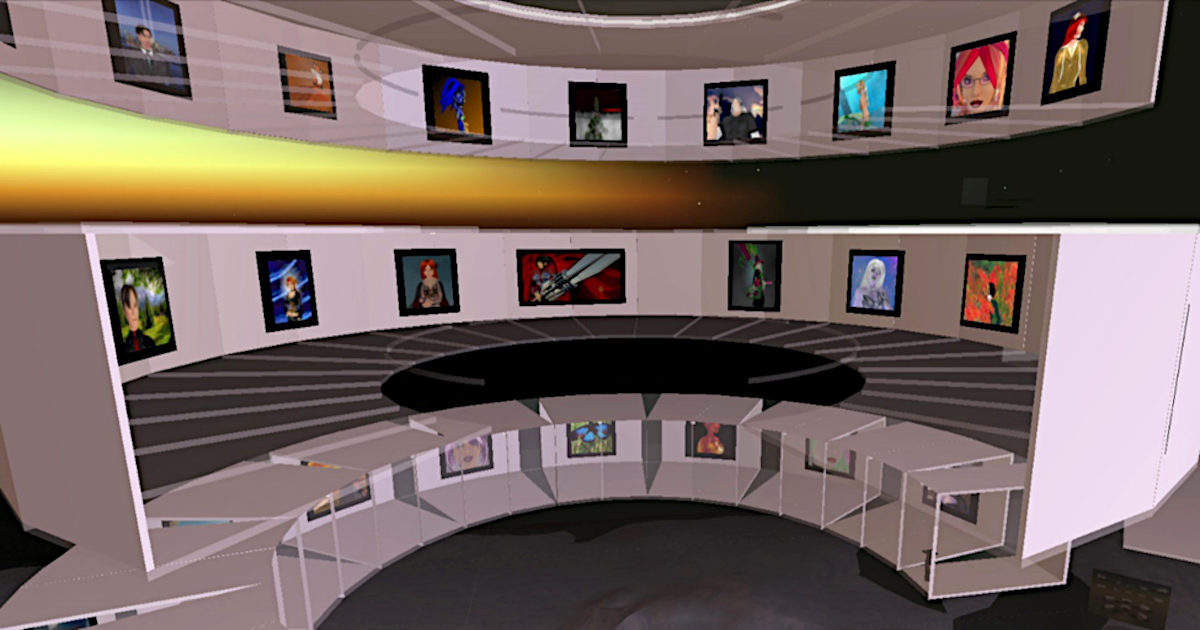Image: Dean Terry (Flickr)
The Metaverse vs Virtual Reality, Two Different Worlds
If you’re not entirely sure what the metaverse is or all of its possibilities, don’t feel bad, it’s currently under construction, and there are no blueprints. Virtual reality, which is the closest most people get to understand the many visions of the next generation of the internet, stops very short of the potential of a metaverse that is still barely defined. Or, as undefined as the World Wide Web was in the early 1990s. And it has to be.
Six months ago, Facebook founder Mark Zuckerberg announced that Facebook would be changing its name to Meta. While many companies were moving toward and claiming their own slice of the metaverse before Facebook’s rebranding, this made Meta and metaverse a household word, and a topic discussed on the nightly news.
Defining Virtual Reality
The building blocks to understanding the metaverse vision include virtual reality. In a virtual reality experience, computers are used to simulate an environment and place the user in that simulation. Rather than scrolling through a monitor, users are immersed and able to interact with 3D worlds. It is limited by the designer.
Defining Metaverse
Most of us carry in our pockets a smartphone that allows us access to what was once referred to as the “information superhighway.” Before this online access, we were impressed by how a floppy disk placed in our desktop computer could contain an entire encyclopedia worth of knowledge or how we could store digital pictures on our hard drive or removable storage to share with others. Comprehending that the interconnection of computers could allow us to have access to ongoing updated information from computers/servers throughout the world was almost unfathomable. And since there was no one architect, but instead a capitalistic motivated development surge filling needs people didn’t even know they had, explaining what the internet would become was not possible.
Flash forward a few decades and the expected next version (Web 3.0) is still largely in the designing stage by many unrelated players. The overall expectation is that one can enter the metaverse and be limitless as to where they can travel to. One might move from clothes shopping to changing into what they purchased, to going to a car show or boat dealer and learning about new vehicles, either real-world or meta. Afterward one might attend a concert or conference or just get together with friends in their virtual home setting. How exactly all this will work and feel, the technology and designers across the planet are working on now. It will evolve based on usage, needs, and competition, just like real-world creation, and just like the internet experienced – do you remember AOL or Netscape Navigator?
Who Will Define It?
The shared virtual world will be built by large companies we all know and small companies we have not yet heard of yet. Facebook (now Meta) is a huge company that will surely play an important role in the early development of metaverse growth and direction. But, it is just one player in an expanding market segment. Other well-known companies that are involved include Microsoft, which recently announced Microsoft Mesh, their version of a mixed-reality platform.
Smaller companies like tokens.com (SMURF) (see
initiation of coverage report by Noble Capital Markets) has what some may view as a “dream team” of experienced managers. Noble Capital Markets Senior Analyst Joe
Gomes defines the company this way,” Tokens.com is a publicly-traded company that invests in Web 3.0 assets linked to the Metaverse, DeFi, NFTs, and Gaming. Tokens.com connects the investing public to the evolving and fast-growing digital universe.” Not unlike other companies, large and small, it is clear SMURF management intends to be nimble both leading and following to earn a slice of what some estimates say will be an $8 trillion market.
Take-Away
The most notable difference between virtual reality and the metaverse is that while virtual reality has already been developed, the metaverse is being developed by competing forces and an array of visions even larger than the internet had when private homes first began getting connected.
From here it’s a journey as it gets built out. The metaverse is not expected to replace the traditional internet, but in many ways do what can’t be done under the internet’s current version. As with the early days of the web, there will be opportunities for companies started in someone’s spare bedroom to grow up to be the next Google, and other large companies that completely miss the potential.
Managing Editor, Channelchek
Suggested Reading
 Metaverse: Five Things to Know – and What it Could Mean for You
|
 Recent Patent Filings Show the Extent that Large Companies are Prepping for Blockchain Profits
|
 COLA Increases for Seniors in 2022 Will Likely Top $68 Billion
|
 Non-Fungible-Tokens Have Become a New Revenue Source for Once Stodgy Institutions
|
Sources
https://www.nytimes.com/2022/01/18/technology/personaltech/metaverse-gaming-definition.html
https://channelchek.vercel.app/companies/SMURF/research-report/3424
Stay up to date. Follow us:

|

